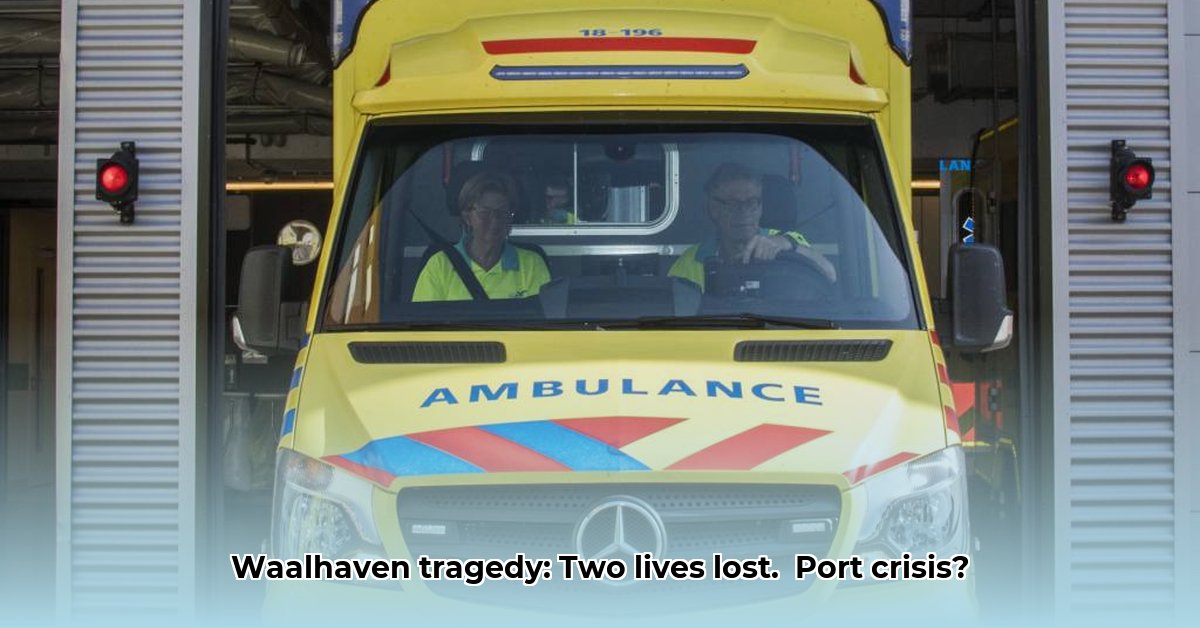
A Devastating Accident in Rotterdam's Waalhaven
Two workers are dead, and two more fight for their lives following a horrific accident involving massive steel plates at Rotterdam's Waalhaven port. This tragedy, unfolding during the unloading of a cargo ship, underscores critical safety failings within the port's operations. The incident has sparked widespread outrage and calls for immediate, drastic improvements to workplace safety.
The Day of the Disaster: A Grim Recounting
The accident occurred during the routine unloading of several tons of steel plates from a cargo vessel. Precise details remain under investigation by the Arbeidsinspectie (Dutch Labour Inspectorate), but initial reports paint a picture of chaos and swift tragedy. Two workers died instantly and were declared dead at the scene. Emergency services responded rapidly, including a helicopter, but two more workers remain critically injured and hospitalised. The scene—filled with the scent of metal and the weight of immense loss—is still fresh in the minds of witnesses.
The Investigation: Uncovering the Truth
The Arbeidsinspectie's investigation is thorough and complex. Investigators are meticulously piecing together the sequence of events, interviewing witnesses, and analysing the physical evidence. Their focus ranges from the condition of the equipment used to the adequacy of worker training, communication protocols, and adherence to safety regulations. This isn’t merely about assigning blame; it's about understanding the systemic failures so the same tragedy isn't repeated. Early reports suggest that multiple factors may have contributed to this disaster.
Potential Causes: A Multi-faceted Analysis
Several contributing factors are under scrutiny. Was there equipment malfunction—a faulty crane or other lifting gear that failed under pressure? Could human error, perhaps in the loading or unloading procedures, have played a crucial role? Were standard operating procedures, and safety regulations, followed correctly? Questions about training, whether adequate and up-to-date, are also central. Did clear communication protocols exist? Were they followed? The tragedy highlights the complex interplay of factors that can lead to such devastating outcomes in high-risk industrial settings. Experts in occupational health and safety are working with the inspectorate and are offering assistance in this critical phase of the investigation.
The Aftermath: A Call for Urgent Action
Beyond the immediate grief and shock, this incident demands urgent action. The human cost is immeasurable, and its impact on families, the port community, and the nation is profound. The Ongeluk Waalhaven transcends simple accident reporting. This is a stark reminder of the ongoing need for vigilance in upholding workplace safety in all industries, not just in the maritime sector.
A Three-Pronged Approach to Prevent Future Tragedies
A comprehensive plan is crucial to prevent a recurrence of such a tragedy. This plan should embrace improved protocols, enhanced reporting, and upgraded technology.
Enhanced Safety Protocols: An immediate review of all steel plate handling procedures across Rotterdam's ports is required. This must encompass inspections, maintenance, training and communication protocols. A culture of proactive safety, where reporting hazards is encouraged; without fear of reprisal, needs to take hold.
Real-time Accident Reporting: A streamlined accident reporting system is critical for rapid response and investigation. Real-time information flow enables immediate intervention and efficient investigations, preventing similar catastrophes.
Investing in Technology: Exploring and implementing advanced safety technologies, such as automated lifting systems, is vital. These innovations can significantly reduce the risk of human error. Regular technological updates and comprehensive maintenance are non-negotiable.
Action Plan: A Collaborative Responsibility
Effective change requires collaboration. Here's a breakdown of necessary actions for involved parties:
| Stakeholder | Short-Term Actions | Long-Term Actions |
|---|---|---|
| Arbeidsinspectie | Complete comprehensive investigation; publicly release findings. | Develop and enhance safety guidelines; implement stricter enforcement. |
| Port Authority | Implement improved real-time accident reporting system. | Invest in advanced safety technology; upgrade training programs; port audits |
| Shipping Companies/Employers | Conduct internal safety audits; enhance worker training programs. | Integrate new technologies; foster a strong safety-first culture; improved communication systems. |
| Workers' Unions | Support affected families; advocate for enhanced safety measures. | Actively participate in safety improvements; ensure worker representation; raise awareness. |
The Ongeluk Waalhaven is a devastating illustration of the vulnerability of workers in high-risk industries. It is a tragedy that must serve as a catalyst for significant and lasting change. It highlights the value of human life and the urgent need for sustained dedication to workplace safety across all sectors. Let's make sure this remains a stark warning, and not a repeated pattern.